Visiting Knossos was the highlight of my trip to Crete: I had dreamed about visiting the palace of King Minos since I don't remember when. Suspended between legend and history, this is where the king of the Minoans was said to keep the Minotaur, a monster half human and half bull. It was killed by Theseus in the myth, with the help of the king's daughter, Ariadne, who had a crush on him. It is possible that the maze-like structure of the palace led to the creation of the myth of the labyrinth, built by Daedalus for King Minos, who also imprisoned the architect so he would not reveal its secrets.
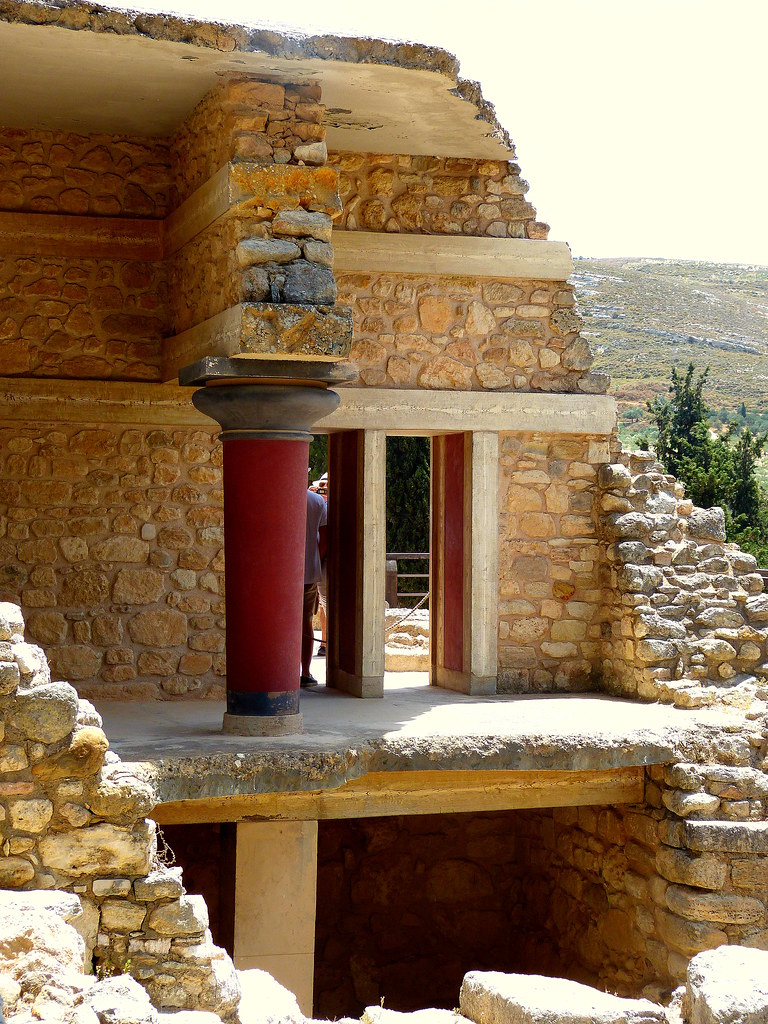 |
| Ruins of Knossos |
The ruins of Knossos Palace are only a 15-minute bus ride from Heraklion, and they are the most visited tourist attraction in Crete. The archaeological site is surrounded by rolling hills covered in olive trees and vineyards, a wonderful welcome to the visitors. The only thing that clashes is the ugly row of souvenir shops and cheap bars outside of the entrance gates. I have been told by a Greek friend that these illegal buildings are the only reason why Knossos is not a UNESCO world heritage site. Aside from that, Knossos really deserves to be included in the list, also because Crete does not have a site protected by UNESCO.
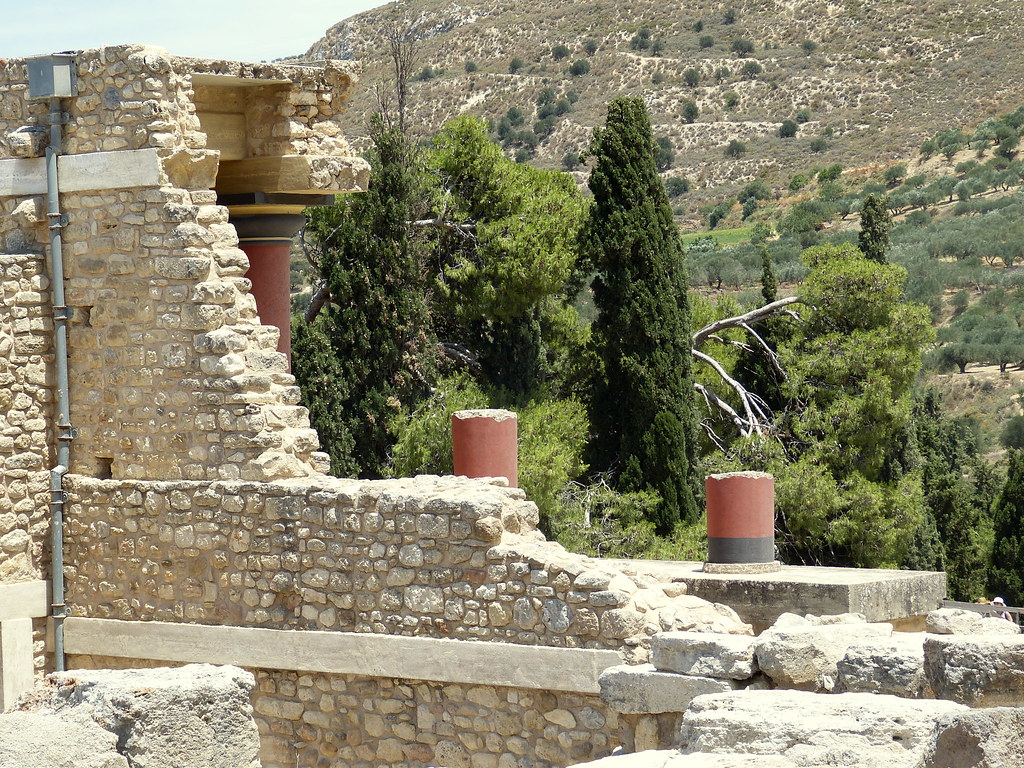 |
| The ruins of Knossos with the rolling hills in the background |
The history of the Minoan civilization and how it came to build this palace is enthralling. The visit of Knossos also helps the occasional visitor understand the evolving of different civilizations in Greece: the Minoan civilization is one of the oldest in the world, and one that was already sophisticated for the time. The first settlement in Knossos dates back to 7000 BC, but the palace itself was first built at the end of the second millennium BC, and then destroyed and rebuilt many times.
The entrance to the site is 6€, but I entered for free because on Sundays it's free for students of the European Union! I decided to hire a guide, which cost me only 10€. I waited about 10 minutes for other English-speaking people to join the tour. The visit lasted between one hour and one hour and a half, and it was very informative.
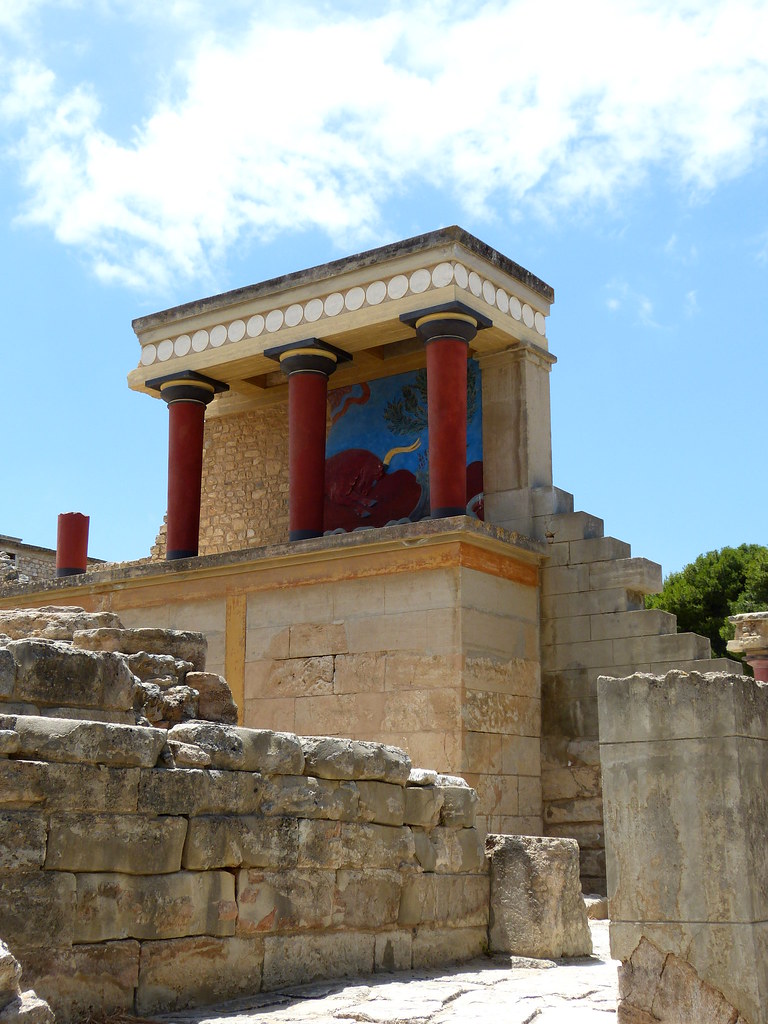 |
| Another good shot from the ruins |
One of the most interesting things I found out thanks to my guide is that in spite of the fact that all guidebooks will tell you that Sir Arthur Evans discovered the palace in 1900, in 1878, when Greece was still under the Turkish occupation, the area was excavated by a team led by Greek art lover Minos Kalokairinos. It was Evans who did all the research on the site, however, spending his entire life and most of his fortune on Knossos. His restoration work is one of the most controversial in modern archaeology, because he let his imagination run wild, also using concrete and other materials to give the visitors an idea of how the palace looked like. You could really see that some parts of the palace were heavily reconstructed, but I think that for the average visitor, someone who does not have a background in archaeology, the visit is very suggestive, because of his interventions. Some of Evans' interpretations have been discredited, but he remains a colossal figure, remembered by a statue at the entrance of the ruins.
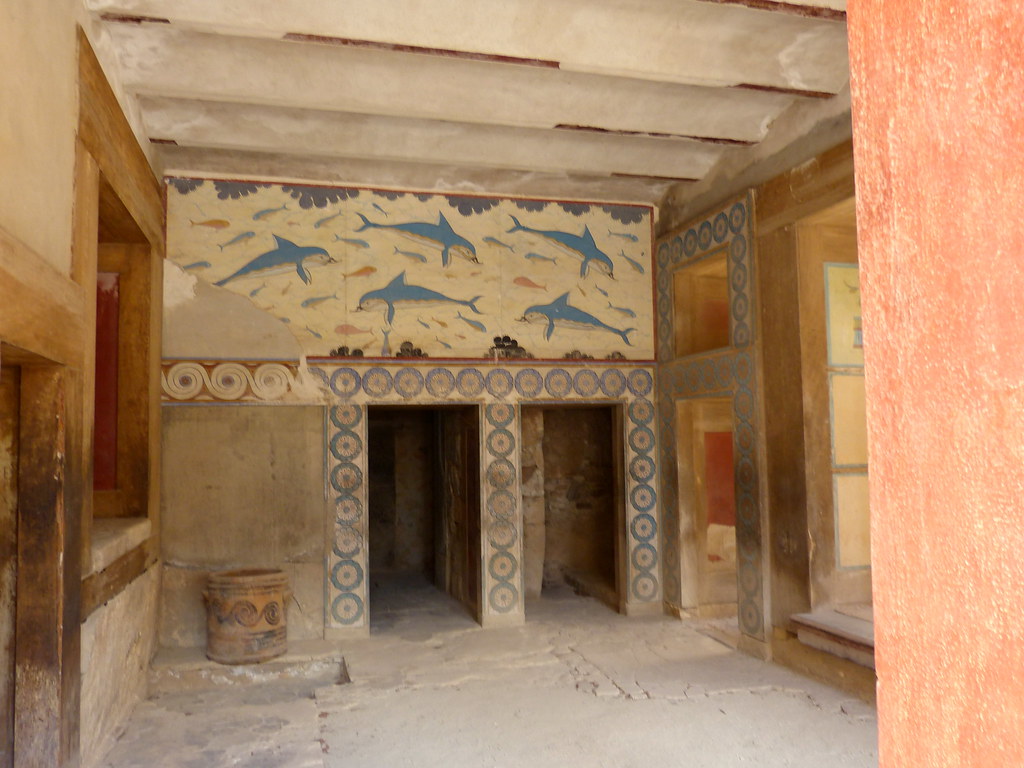 |
| Queen's megaron, with the dolphin fresco |
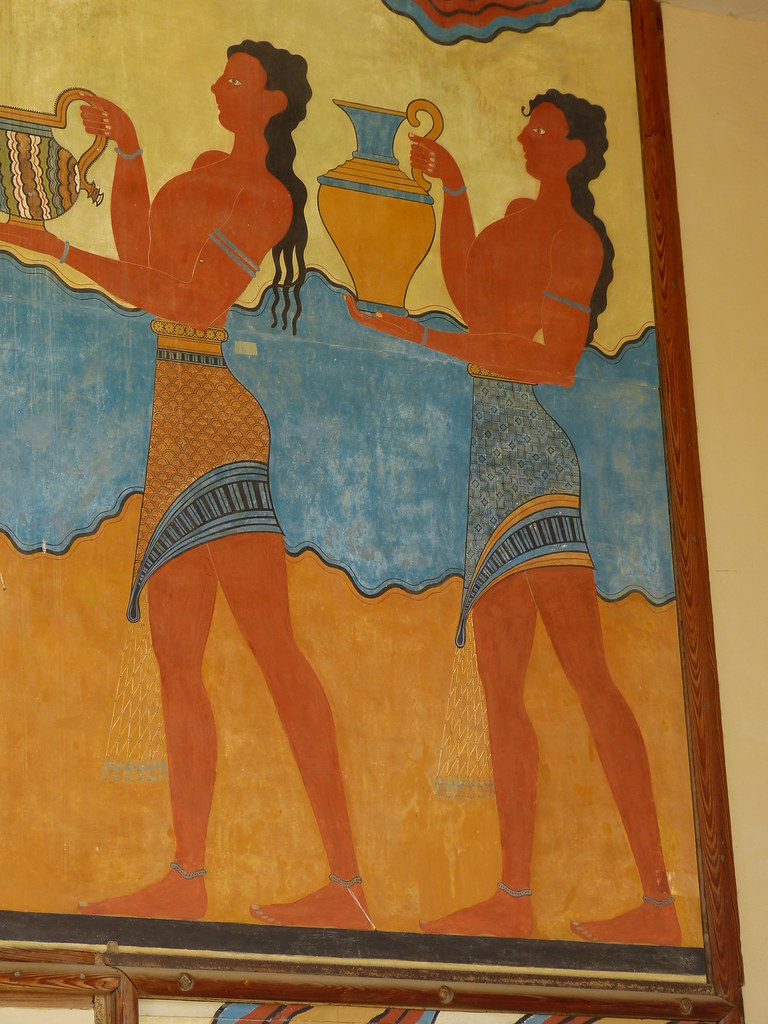 |
| The cup-bearers fresco |
The palace had an ingenious sewage system that took clean water to the palace and got rid of the dirty remains. It was the first in its genre in Europe. The queen's room even had one of the first examples of flushing toilet, which was activated by pouring water from a jug. It also had a bath tub that could be drained, how fascinating!
What makes Knossos a unique experience are the details. Just look at those pithoi, giant jars used to store olive oil, wine or grain.
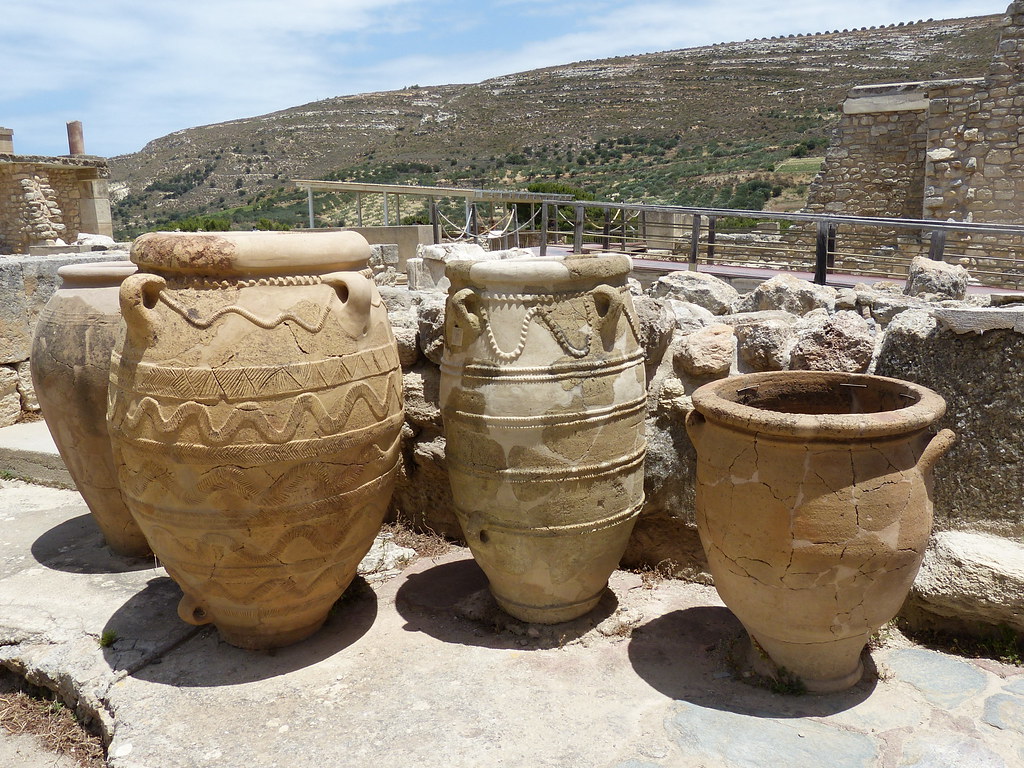 |
| Giant Pithoi |
The complex even included a theatre, but the guide told us that it was not a theatre as we know it today. Around 400 people could sit there, but the enactments were merely religious. He also anticipated that theatre as we conceive it in the Western world was born later on in the Theatre of Dionysus in Athens, a place I would be visiting in a few days. What a thrill down the spine!
I honestly thought the excavation area was bigger, but in the end it was a satisfying experience. I particularly loved those red columns with the yellow ring on top. I can imagine how colourful the palace must have looked like back in the day. In some parts it had five storeys, isn't it impressive?
I ended my visit with a moussaka from the restaurant within the complex, and filled my stomach, as well as my craving for ruins and history. I took the bus back to Heraklion, and the day after I was off to Santorini.
Wait for my next post on the most famous of the Greek islands!
Wow, this is absolutely fascinating, particularly their sewage system. Genius! Your pictures are gorgeous and I thoroughly enjoyed reading this. What a shame about it not being a UNESCO world heritage site. Hopefully they can find a way to get rid of those shops and bars.
ReplyDeleteHappy travels :)
I'm glad you got to fulfill your dream to visit this site. The frescoes are gorgeous! And it's amazing that some of those vats were used to hold olive oil. A vat of olive oil that size would cost an arm and a leg these days!
ReplyDeleteYes, it was a very interesting and fascinating visit. I'm glad I went to Crete!
ReplyDelete